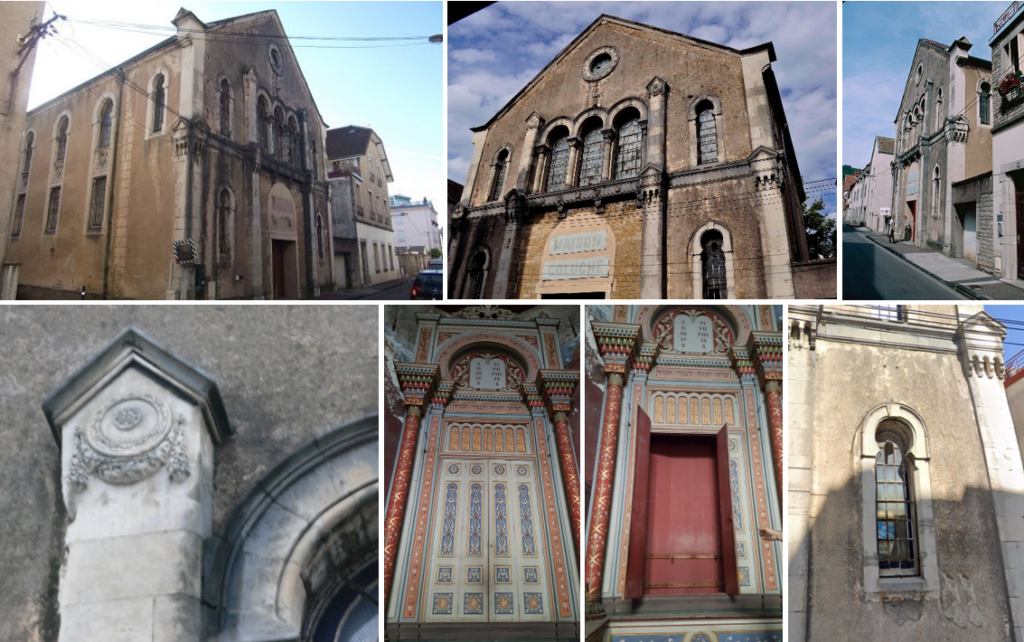
Parshat Vayigash (ויגש – and he drew near), Genesis 44:18–47:27.
Genesis 47:12
וַיְכַלְכֵּל יוֹסֵף אֶת-אָבִיוְאֶת-אֶחָיו, וְאֵת כָּל-בֵּית אָבִיו-לֶחֶם, לְפִי הַטָּף
Joseph feeds his father, his brothers and all his father’s house,
giving food according to the needs of each family.

The synagogue was built in 1875. At that time, Vesoul was the seat of the consistory of eastern France. It was decommissioned in 1945, then became the property of Restos du Cœur1 years later. It was the subject of a registration as a historical monument in 1984.
The Jewish community of Vesoul, between the 13th and 14th centuries, was the largest in the county of Burgundy. In 1324, the Countess of Burgundy expelled the Jews from the city and confiscated their property. Around 1808, the community was reconstituted, then strengthened in 1870 by the arrival of Alsatian Jews. During the Second World War, the community disappeared2.
In 1914, Raymond Samuel, known under the pseudonym of Raymond Aubrac3, son of Jewish merchants, was born not far from this synagogue.
1 Charitable association created by Michel Colucci, dit Coluche (1944-1986) in 1985.
2 Raymond Aubrac’s parents, Albert and Hélène Samuel and his brother Paul, as well as 104 other people are arrested as Jews, sent to Drancy, then murdered in Auschwitz.
3 Raymond Aubrac (1914-2012), married in 1939 to Lucie Bernard (1912-2007), both members of the Liberation resistance movement.



